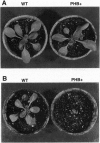Abstract
In the bacterium Alcaligenes eutrophus, three genes encode the enzymes necessary to catalyze the synthesis of poly[(R)-(-)-3-hydroxybutyrate] (PHB) from acetyl-CoA. In order to target these enzymes into the plastids of higher plants, the genes were modified by addition of DNA fragments encoding a pea chloroplast transit peptide, a constitutive plant promoter, and a poly(A) addition sequence. Each of the modified bacterial genes was introduced into Arabidopsis thaliana by Agrobacterium-mediated transformation, and plants containing all three genes were obtained by sexual crosses. These plants accumulated PHB up to 14% of the dry weight as 0.2- to 0.7-micron granules within plastids. In contrast to earlier experiments in which expression of the PHB biosynthetic pathway in the cytoplasm led to a deleterious effect on growth, expression of the PHB biosynthetic pathway in plastids had no obvious effect on the growth or fertility of the transgenic plants and resulted in a 100-fold increase in the amount of PHB that accumulated. We conclude that there does not appear to be any biological barrier to high-level production of PHB in higher plants. The high level of PHB accumulation also suggests that the synthesis of plastid acetyl-CoA is regulated by a mechanism which responds to metabolic demand.
Full text
PDF
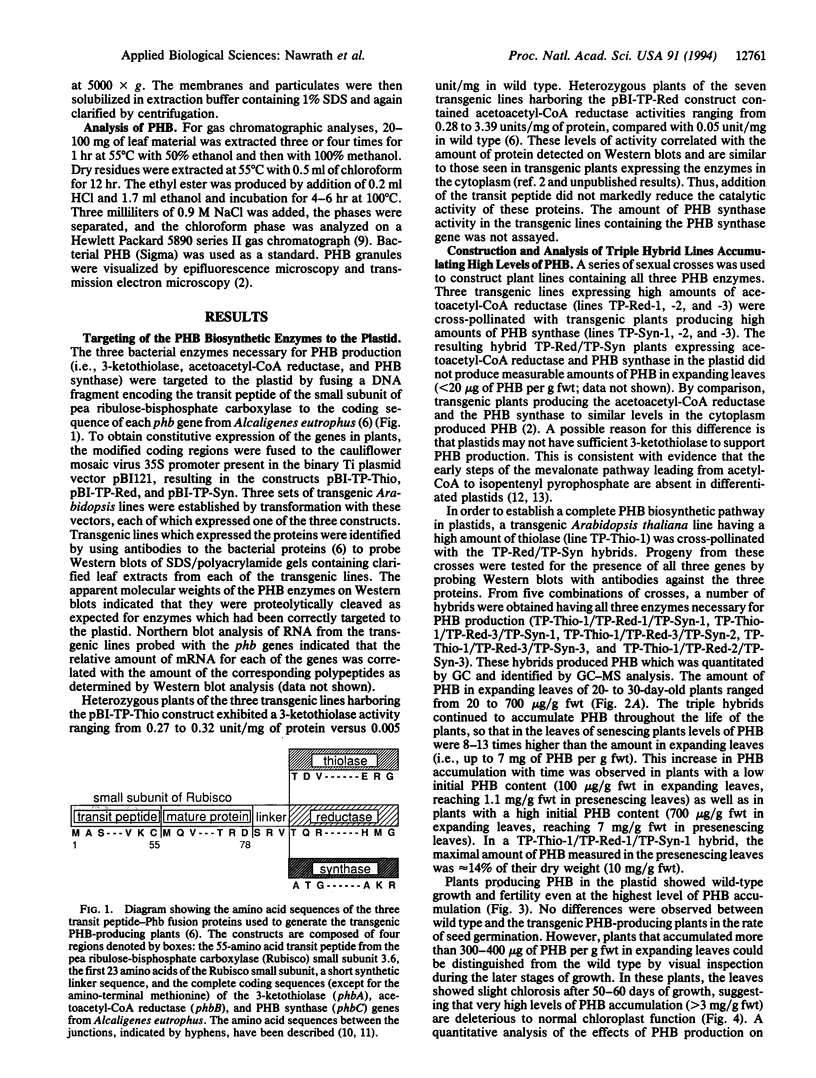
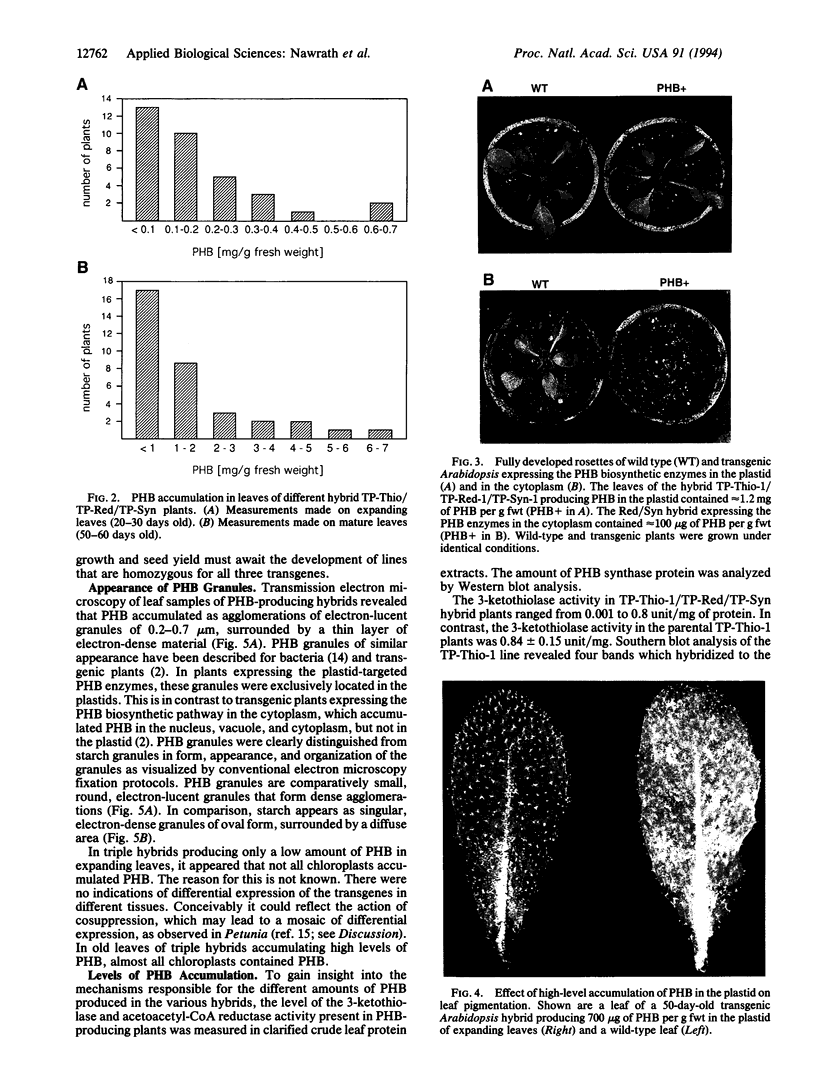
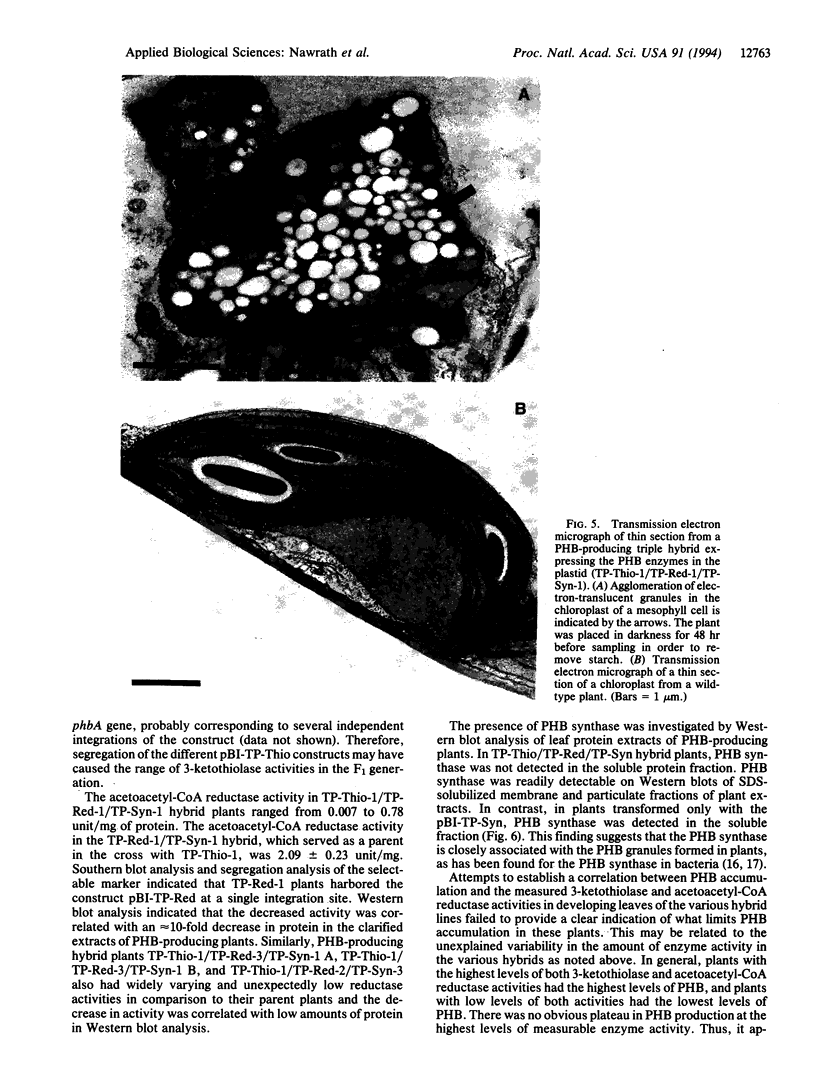
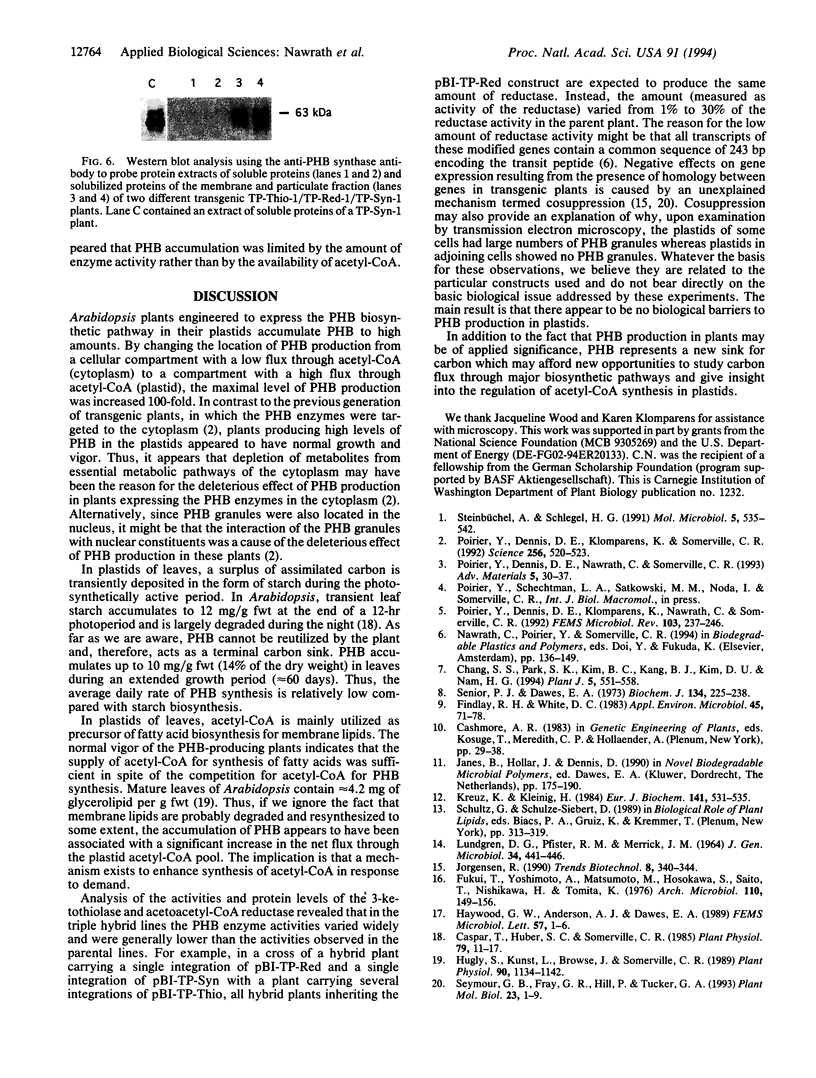
Images in this article
Selected References
These references are in PubMed. This may not be the complete list of references from this article.
- Caspar T., Huber S. C., Somerville C. Alterations in Growth, Photosynthesis, and Respiration in a Starchless Mutant of Arabidopsis thaliana (L.) Deficient in Chloroplast Phosphoglucomutase Activity. Plant Physiol. 1985 Sep;79(1):11–17. doi: 10.1104/pp.79.1.11. [DOI] [PMC free article] [PubMed] [Google Scholar]
- Findlay R. H., White D. C. Polymeric Beta-Hydroxyalkanoates from Environmental Samples and Bacillus megaterium. Appl Environ Microbiol. 1983 Jan;45(1):71–78. doi: 10.1128/aem.45.1.71-78.1983. [DOI] [PMC free article] [PubMed] [Google Scholar]
- Fukui T., Yoshimoto A., Matsumoto M., Hosokawa S., Saito T. Enzymatic synthesis of poly-beta-hydroxybutyrate in Zoogloea ramigera. Arch Microbiol. 1976 Nov 2;110(23):149–156. doi: 10.1007/BF00690222. [DOI] [PubMed] [Google Scholar]
- Hugly S., Kunst L., Browse J., Somerville C. Enhanced thermal tolerance of photosynthesis and altered chloroplast ultrastructure in a mutant of Arabidopsis deficient in lipid desaturation. Plant Physiol. 1989 Jul;90(3):1134–1142. doi: 10.1104/pp.90.3.1134. [DOI] [PMC free article] [PubMed] [Google Scholar]
- Jorgensen R. Altered gene expression in plants due to trans interactions between homologous genes. Trends Biotechnol. 1990 Dec;8(12):340–344. doi: 10.1016/0167-7799(90)90220-r. [DOI] [PubMed] [Google Scholar]
- Kreuz K., Kleinig H. Synthesis of prenyl lipids in cells of spinach leaf. Compartmentation of enzymes for formation of isopentenyl diphosphate. Eur J Biochem. 1984 Jun 15;141(3):531–535. doi: 10.1111/j.1432-1033.1984.tb08225.x. [DOI] [PubMed] [Google Scholar]
- LUNDGREN D. G., PFISTER R. M., MERRICK J. M. STRUCTURE OF POLY-BETA-HYDROXYBUTYRIC ACID GRANULES. J Gen Microbiol. 1964 Mar;34:441–446. doi: 10.1099/00221287-34-3-441. [DOI] [PubMed] [Google Scholar]
- Poirier Y., Dennis D. E., Klomparens K., Somerville C. Polyhydroxybutyrate, a biodegradable thermoplastic, produced in transgenic plants. Science. 1992 Apr 24;256(5056):520–523. doi: 10.1126/science.256.5056.520. [DOI] [PubMed] [Google Scholar]
- Senior P. J., Dawes E. A. The regulation of poly-beta-hydroxybutyrate metabolism in Azotobacter beijerinckii. Biochem J. 1973 May;134(1):225–238. doi: 10.1042/bj1340225. [DOI] [PMC free article] [PubMed] [Google Scholar]
- Seymour G. B., Fray R. G., Hill P., Tucker G. A. Down-regulation of two non-homologous endogenous tomato genes with a single chimaeric sense gene construct. Plant Mol Biol. 1993 Oct;23(1):1–9. doi: 10.1007/BF00021414. [DOI] [PubMed] [Google Scholar]
- Steinbüchel A., Schlegel H. G. Physiology and molecular genetics of poly(beta-hydroxy-alkanoic acid) synthesis in Alcaligenes eutrophus. Mol Microbiol. 1991 Mar;5(3):535–542. doi: 10.1111/j.1365-2958.1991.tb00725.x. [DOI] [PubMed] [Google Scholar]




